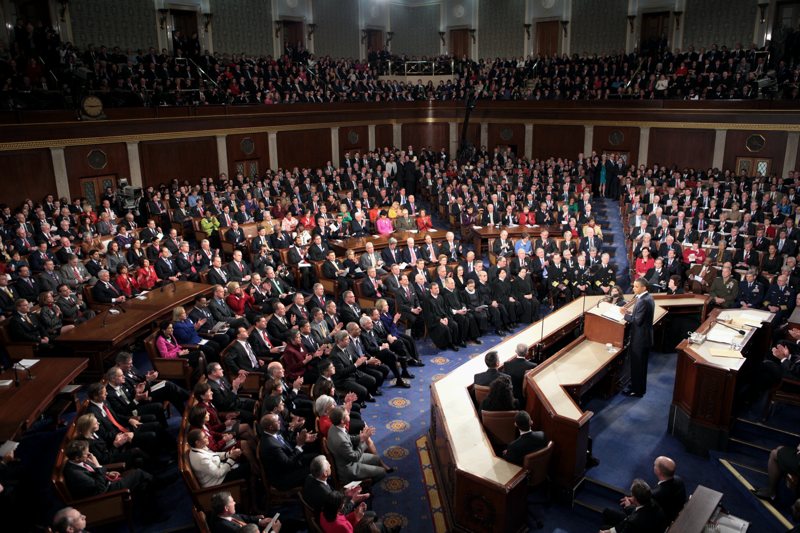But President Obama’s January speech is more than a speech.
The United States Constitution is a short document. Its language is very economical. Yet it specifically states that the President “shall from time to time give to the Congress Information of the State of the Union, and recommend to their Consideration such Measures as he shall judge necessary and expedient.”
The first president, George Washington, translated “from time to time” into “each year.” His first Annual Message (as it was then called) was given in 1790 as a speech. Every year since then—almost 225 years—the President has submitted an annual report to Congress, although from 1801 until 1913, presidents gave an annual written report of national conditions, along with their policy recommendations, to the Congress.
Woodrow Wilson began the shift to a public oral speech in 1913. He thought a president could use the occasion to act as the nation’s spokesman.
The lesson wasn’t lost on those who came after him.
In 1923, President Calvin Coolidge used the new radio technology to share his policy proposals with the American people when he reported to Congress. President Franklin Roosevelt ushered the annual speech into its modern age: he was the first to popularize it as the “State of the Union” address.
It was first televised in 1947. Lyndon Johnson made the speech prime time television in 1965. A constitutional mandate to report to Congress is today a chance for a president to speak directly to the American people about his vision of what the country is and should be—and how to achieve that vision.
Anyone curious about U.S. government can see many of its major players if they watch the State of the Union. Almost everyone who is anyone in U.S. politics is there.
The speech is given in the chamber of the U.S. House of Representatives to both houses of Congress. All U.S. Senators and all members of the House of Representatives sit “on the floor” of the House chamber (in chairs, but within the chamber itself, not the balcony above). Members of the President’s cabinet and members of the Supreme Court also sit on the floor. Invited guests fill the observation balconies above the floor.
It should be noted that there are exceptions to the general rule that every player in government attends the speech. Traditionally, one cabinet member, and, since September 11, 2001, two designated members of Congress from each of the two major political parties, do not attend. This is in case a major disaster disables the rest of the government. Presumably, a new government would form from these survivors, allowing the nation to continue.
[You can find a glossary of some of the terms in this post at: http://quizlet.com/33769342/state-of-the-union-flash-cards/ ]

No comments:
Post a Comment